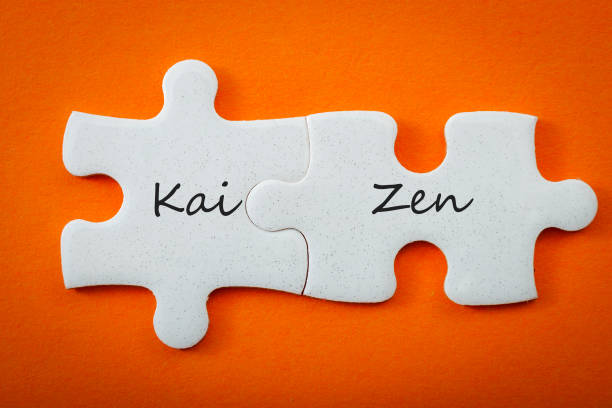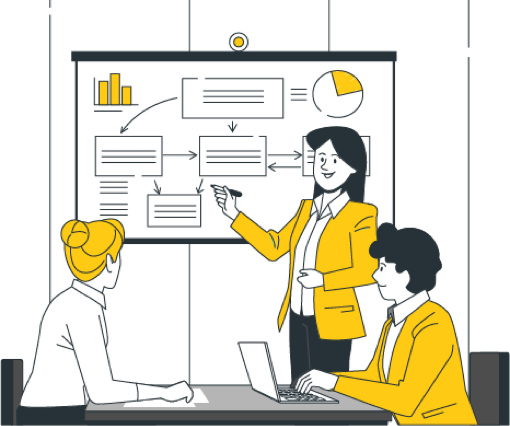Kaizen is a Japanese term which means “change for the better”. This principle is widely applied through companies as a strategy in order to empower their employees. Every company aims to have their business improve on a day-to-day basis. This way, businesses can ensure their ability to produce higher quality products & quicker services as well as provide top quality CX, etc. It is important for companies to understand that through managing their business in such a way, various methods that then can be applied in order to raise their overall corporate processes. One such method is Kaizen. If you are unfamiliar with this method, please refer to the explanation below.
Dokodemo-Kerja is currently the best online attendance application in circulation, applying a full range of features used to flexibly increase overall employee productivity.Some of these features include Attendance & Leave Management, Task Organization, as well as Employee performance evaluation: all through just one application.
Manage Employees Easier through the Dokodemo-Kerja HRD Application. Try it now!
What is Kaizen?
Kaizen is derived from two Japanese words, namely Kai which means improvement and Zen which means good. So, Kaizen roughly translates to “change for the better”.
In the business world itself, Kaizen is a method that stresses continuous improvement carried out by the entirety of the workforce, from the HR department, to the CEO and employee base. Kaizen’s goal is to improve the overall functionality of a business in regards to its products, services, and people by continuously implementing small-scale changes across the enterprise.
It is important to note that this method involves gradual changes; by taking small steps, this strategy is inherently considered a low risk and inexpensive approach. As a result, Kaizen encourages workers to experiment and try new ideas without fear of losing a large amount of capital investment.
The Basic Principles of Kaizen
There are several principles that are applied to the Kaizen process. Anyone who wishes to apply this method must adhere to such principles. These principles are as follows:
– Don’t rely on assumptions.
– Be proactive in solving problems.
– Challenge the status quo.
– Let go of perfectionism and adopt an iterative attitude of adaptive change.
– Immediately find a solution when a problem is found.
– Create an environment where everyone feels empowered to contribute.
– Ask “why” 5 times to identify the root cause of the problem.
– Get lots of people involved in running the business and ask for their opinion.
– Use creativity in order to discover small improvements at a low cost.
– Never stop to make improvements.
Why Should Companies Apply the Principles of Kaizen?
When companies apply these tactics in a cohesive manner, your company can achieve positive results within a variety of aspects, such as the following:
1. Improving teamwork
As mentioned above, when implementing the principles of Kaizen, companies need to involve the entirety of the workforce, from the CEO to the employee level. That way there will be more and more people involved in locating small scale mistakes and gradually improving business processes on a comprehensive scale. This method will ultimately lead to better teamwork overall, as everyone chips in.
2. Utilization of existing resources
Kaizen is about the utilization of existing resources, including the company’s human resources. The company will encourage employees to make improvements so that it has a positive impact on the business.
3. Increase employee morale
Applying the principles of Kaizen can also incentivize companies to cultivate an environment where everyone feels empowered to contribute. Therefore, the company will regularly involve its workforce within the improvement process. You’ll in turn value their opinions, ask for feedback and suggestions, and encourage new ideas. This will allow employees to in turn gain well deserved recognition, and increase the connections between the company and the employee. As a result, employees will feel more motivated and interested when engaged in their work.
4. Improve efficiency
Kaizen encourages companies to not rely solely on assumptions, but instead, to rely more on hard data. In addition, companies must also identify in depth the root causes of problems. That way, companies can make careful observations to find out any inefficient business processes.
5. Increase productivity
An advanced HRIS system that effectively monitors the performances and productivity of your employees. WFO or WFH? Manage both and Stay Productive with Dokodemo-Kerja!
An affordable HRIS app that increases productivity. Check it out here!
Small improvements made on an ongoing basis by employees will inevitably drive higher levels of productivity. With productivity continuing to improve, your business can reach ahead of the competition and even its own stated goals.
Examples of Basic Kaizen Principles that Your Company can Implement
1. Focus on Gradual Changes
A critical example that illuminates the mindset taken on by the principles of Kaizen is to embrace any small changes that can be implemented on a gradual basis. It’s important to know that small improvements are easier to implement and that after running for a period of time they can eventually have a big impact on the company.
A simple example is to increase the overall level of employee discipline by making sure no one arrives late. If this minor improvement is practiced by all employees, the overall level of employee productivity will gradually increase over time due to it affecting by proxy all other aspects of the enterprise, such as in regards to overall discipline, punctuality and respect for deadlines.
2. Eliminate Waste in the Company
Improvements can also be made by eliminating wasteful processes or factors that are not required by the business itself. Examples include:
- Certain staff skills that are not required
- Redundant or unnecessary business processes
- High absenteeism
- Excessive use of paper because it does not take advantage of digital platforms
- Poor time management
- Etc.
3. Focus on the Overall Improvement Process
Kaizen encourages improvements that can be implemented by HR Departments through carrying out their duties. To find out what needs to be done, you can ask yourself a few things:
- How can I make my job more enjoyable?
- How can I complete this task faster?
- How to produce better results?
4. Keep up to Date and Follow Developing Trends
Keeping up with any trends and the changing pace of time is also a key element within Kaizen that your company can follow. A simple example is switching to using online attendance applications and leaving the traditional timesheet system to improve your employee management systems. As we all know, digital technology is growing rapidly. By utilizing this technology, the system can help carry out tasks automatically so that companies can save more energy and time.
5. Always Look for Feedback
Small improvements will make a big difference. To find out the results of such improvements that have been obtained, it is possible to ask for feedback throughout all branches of the enterprise, from management to the general workforce.
In addition, considering that Kaizen can be applied to all human resources throughout the company, such feedback can be given by superiors or subordinates. In addition to being able to keep oneself updated with the progress being made, such feedback will also enable employees to respect and support one another. The relationship between superiors and subordinates can also become stronger when such feedback is given and received in a respectful and sociable manner.
Improving the Company’s HR Management Process
After understanding the principles of Kaizen, you should further note that this method will involve the HR department to a large extent. Now, considering that this department is a company asset, you should first try to implement the various processes and management systems of the Human Resources department so that any such modifications made to the company as a whole, start from the “ground up” through HR; this will eventually spread by proxy to other areas of the enterprise.
One way to do this is to use HRIS applications such as Dokodemo-Kerja. This application was specifically designed for the company’s HRD team, allowing them to work in an efficient manner when managing the company’s human resources. This way, the HRD team can save a lot of time. Some of the functions provided by Dokodemo-Kerja are as follows:
- Online attendance (e-absensi) features: this feature allows employees to conduct their attendance digitally.
- Time tracker: this feature is used to calculate the total number of employee working hours and overtime hours.
- Leave management features: allows the management of employee leave days digitally.
- Screen monitoring features: monitors laptops and desktops so that companies can minimize any employee activities outside the work scope, such as playing social media.
- Etc
Dokodemo-Kerja is a great asset to utilize in ensuring the overall productivity of your workforce. Please learn more about the functionality of this application by visiting Dokodemo-Kerja’s “Features” page. You can also contact us to get a direct consultation regarding this amazing tool.







